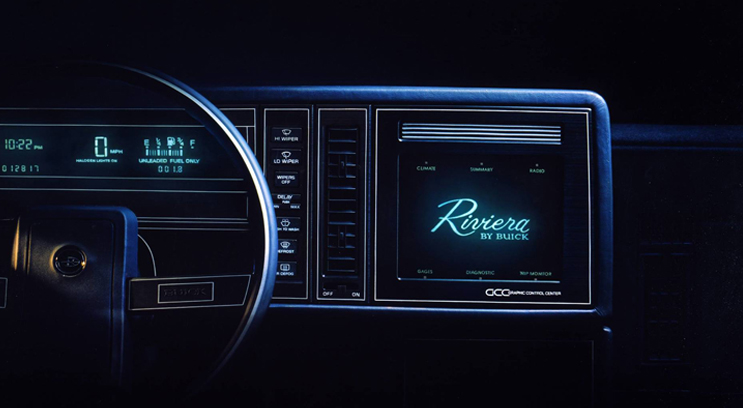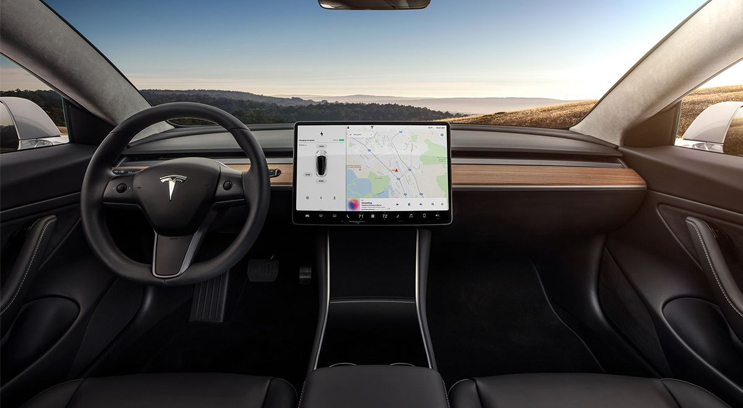In-Vehicle Touchscreens Are Not the Problem. The Software That Runs Them Is.
First introduced in the 1986 Buick Riviera, the in-vehicle touchscreen or Human-Machine Interface (HMI) is not a new technology. Today touchscreens, however, have since replaced the mechanical controls of old and become the new standard of automotive HMI.
In spite of their rising popularity, there seem to be voices inside the automotive industry that vehemently oppose the adoption of touchscreens. Earlier this year, Mazda announced its intention to purge touchscreens from its vehicles, arguing that touchscreens pose a safety risk to drivers.
The basic premise of this argument is: touchscreens have a greater cognitive load on the driver than their mechanical counterparts, which means a greater chance of a driver being distracted. With driver distraction being one of the major causes of road accidents (10 to 30 percent of road accidents are due to driver distraction according to EU estimates), this is a serious concern for all automakers when developing infotainment solutions for future vehicles.
The cognitive load generated by the touchscreens has to do with their nature. Unlike mechanical buttons, touchscreens do not trigger the driver’s haptic perception. Haptics, also known as the science of touch, can be split into two categories:
- Tactile perception– information coming from the skin (i.e. how the material we touch feels)
- Kinesthetic perception– information obtained by the movement and position of the joints (e.g. when we move something).
Mechanical buttons trigger both tactile and kinesthetic perceptions. For example, a driver feels a mechanical button virtually “move” when transferred through the driver’s kinesthetic perception and gets instant feedback on whether his action was successfully performed or not. The fixed position of a mechanical button also allows the driver to develop muscle memory and be able to engage it without looking at it.
On the other hand, touchscreens do not feature any moving parts, so they fail to trigger the driver’s kinesthetic perception and he cannot get feedback on the action performed. To combat this, engineers have developed feedback loops that range from simple (e.g. sound alarming) to more complicated (e.g. haptic feedback with vibration). Additionally, muscle memory is harder to achieve in touchscreens because the entire surface of the screen feels the same. So, the driver might need to glance at the screen to see where exactly to touch.
If you look closely at the shortcomings of touchscreens, a pattern emerges. It’s not the actual touchscreen or the hardware to blame for the concerns; it’s the software and user interface (UI) that seems to have failed touchscreens in cars.
One of the many benefits touchscreens have over mechanical controls is this: software can change via over-the-air (OTA) updates. If a position of a button is inconvenient for the driver, the mechanical controls cannot change. In touchscreens it can. So, any mishaps in interface can be changed or customized to fit the needs of the driver. This way, muscle memory can be developed and the cognitive load is minimized.
However, while drivers and passengers (almost) never complain about the hardware of the touchscreen, designing and validating touch controls in a vehicle is not an easy task. Since many operations executed via touch controls in cars are critical to driver and the passenger safety, strict standards have been enforced in the industry, such as the IEC 61000-4 requirements.
For a touch sensor to meet industry requirements, a tedious, iterative design process takes place that usually involves creating several prototypes and testing them. This process is not only expensive, but it also does not give any insights on the underlying physical phenomena that takes place.
A better alternative to prototyping is simulation. Fieldscale SENSE is a simulation tool that allows engineers, regardless of their familiarity with simulation, to easily simulate capacitive touch sensors, such as those used in the automotive industry. With the valuable insights simulation results give, a hardware engineer can make informed decisions about the design, get insight into how it behaves in extreme conditions, test behavior with various manufacturing tolerances and ensure it meets the strict standards of the automotive sector.
Touchscreens as HMI in cars is a relatively new technology that will fully mature in the next few years. While there is some room for experimentation with the UI, the same cannot be said for the hardware. The hardware of the touchscreens needs to be as reliable, accurate and fast as possible, as it serves as the main platform for controlling the vehicle. As hardware engineers, we need to provide the best hardware to facilitate the operation of the vehicle.
A cost-effective way to achieve this is through simulation. You can start simulating touchscreens today, with Fieldscale SENSE, which is available through the Altair Partner Alliance.






